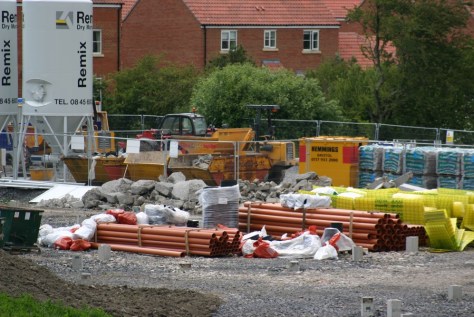Monday was my first day back at work after a week on leave, where we went to France for a holiday. It was nice to get away from it all. The situation (at the time) in France was nice and calm. As we now approach the end of the week, it looks like the situation in France is looking worse than when we were there. It was pretty much a last minute affair in booking the holiday, we booked on the Tuesday and went on Sunday. I think if we had decided to go later in the summer, we probably wouldn’t have gone at all. It brings back to the fore the whole challenge of what is, or what isn’t going to happen in the next six to twelve months, or even longer.
After my leave, I was a little anxious when I got to my computer, how many unread e-mails would be in my inbox, but in the end there was just 143. Well there was 143 in the main inbox, there were others in folders that go there with the automatic rules I use for e-mail.
I use the Inbox Zero approach when it comes to e-mail. This means I don’t check my e-mail and see what is there, I read, process and deal with my e-mail. For each e-mail I process them using one of the following five criteria.
-
- Delete or Archive
- Delegate
- Respond
- Defer
- Do
I try to ensure that I only ever read an e-mail once and then it is either deleted or archived having undertaken what was required. Read more about how I process my e-mail.
In the end it didn’t take me long to go through the e-mails (well it is August) and then do the one task that had arisen from them. Most of the e-mails were from mailing lists I am subscribed to, and though I have rules that push JiscMail ones to specific folders, others from vendors and event organisers generally tend to end up in the main inbox.
Microsoft appear to be developing Teams into a VLE with the news that educators can now use SCORM curricula within Microsoft Teams.
Colleges across England can now use SCORM learning materials for their students directly through Microsoft Teams. In a major development for schools, colleges and universities, GO1 have released their app for Microsoft Teams. This will support SCORM, xAPI and other rich learning content packages formats to be accessed within Teams for free. In 2015, more than half of further education institutions across the UK teamed up to form the Blended Learning Consortium. This allows them to pool their money and purchase a higher quality of learning resources than they could develop on their own. These resources are available to participating colleges within Teams via the GO1 app, which supports complex learning formats like SCORM.
Via Lawrie Phipps on the Twitter
Having cancelled Data Matters 2020 due to the covid-19 pandemic, we are now considering our options for 2021. When we cancelled the event, our initial thoughts were to re-schedule to January 2021, which reflected the original date for the 2019 event. However now needing to make decisions, social distancing and the fact that a lot of university staff may not actually want to (or be permitted) to travel to physical events, such as Data Matters. Could we do it online? Well would people be willing to pay for an online event?
It’s interesting to see how things keep changing adding much more to an uncertain future. I wrote a blog post about the continuing uncertainty and what this means for curriculum planning across the university sector.
The plan to use more localised lockdowns to contain the virus reminds us that the situation for many universities will be one of flux, as they or their cohorts of students may need to lockdown, as has happened with Aberdeen. The local lockdown there has resulted in the main university library closing down.
Set in the 23rd Century, Rene Auberjonois playing a Starfleet Colonel trying to convince his superiors of their technological advantage over the Klingons – by using a flip chart! Nice to know that they will still be extensively used in the future.
I published another blog post in my translation series, this time about the humble flip chart.
Spent some time thinking about innovation. We often forget that sometimes people don’t like innovation and innovation doesn’t automatically always mean better. Actually most of the time innovation for a lot of people is rarely better. Sometimes its worse than what was before, most of the time it’s just different. Innovation is defined as new or different, but it isn’t defined as been better that was there was before. I have written about this before last year and it’s something that has been, for most of my careers an important aspect. As we emerge from lockdown, we will need to be innovative in our practices.
The end of the week saw some meetings with my colleagues in my new directorate. Though I have not changed roles, where I sit within Jisc has changed. After sitting in Corporate Services to begin with, I moved (temporarily) into Data and Analytics, but now sit with the HE Directorate.
My top tweet this week was this one.
Here's a question for you? What is your university saying about attending external events (physically) in the next academic year? Are you getting any guidance about attending meetings, conferences, training, etc?
— James Clay (@jamesclay) August 5, 2020


































